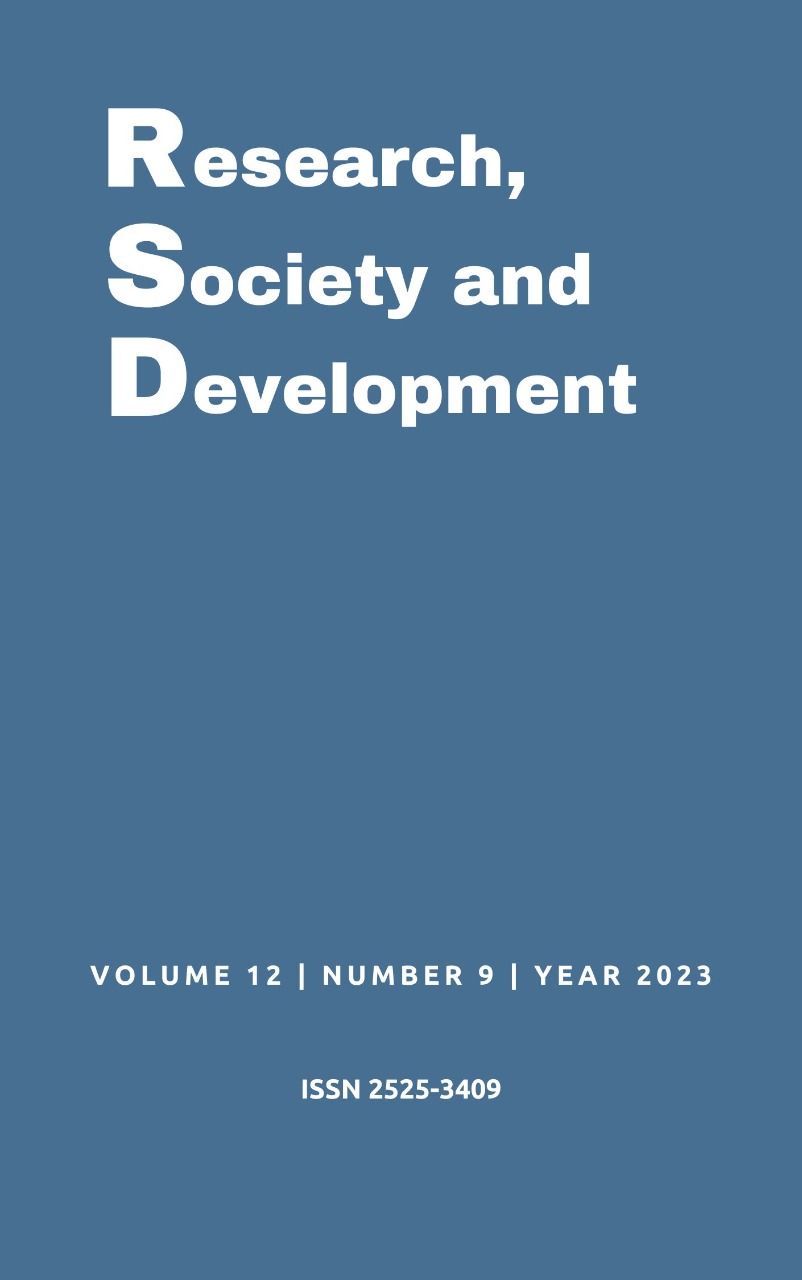Possibilidades de uso de passiflora incarnata em uma perspectiva fitoquímica e farmacológica
DOI:
https://doi.org/10.33448/rsd-v12i9.43008Palavras-chave:
Plantas medicinais, Plantas ansiolíticas, Passiflora, Passiflora incarnata.Resumo
O objetivo deste estudo tem como tema “Possibilidades de utilização da Passiflora do ponto de vista fitoquímico e farmacológico”. Realizar uma pesquisa histórica do uso desta espécie vegetal, investigar e descrever as finalidades e indicações de seu uso como farmacoterapia, e fornecer orientações sobre as possíveis consequências associadas ao seu uso ou uso indevido, levando em consideração os efeitos adversos e toxicológicos relatados. efeitos. Dentre essas propriedades e utilizações, encontram-se efeitos ansiolíticos, sedativos e antiespasmódicos. Seus efeitos foram obtidos através do extrato de metabólitos secundários encontrados em diversas partes da planta como raízes, casca, caule, folhas e flores. A pesquisa aqui apresentada prioriza a descoberta de conhecimentos essenciais sobre os usos da Passiflora incarnata, e com isso assume grande importância e complexidade, por se tratar de uma espécie de Passiflora que não é cultivada no Brasil e possui amplo espectro de atividade farmacológica.
Referências
Cristiano, M. A. O. et al. (2014) Evaluation of the use of herbal medicines: ginseng, passion fruit and valerian in a drugstore in Aurilândia-Goiás. Revista Faculdade Montes Belos (FMB), 7(2) 71-87.
Dantas, L. P. (2014) Effects of Passiflora incarnata and Midazolam on anxiety control in patients undergoing impacted third molar extraction. Dissertation (master’s degree in Dentistry) – Federal University of Sergipe 1-74.
Eich, L. (2011). Validation of the dosage of Passiflora incarnata dry extract 3.5% calculating total flavonoids expressed in vitexin by UV-visible absorption spectroscopy. nilasalle, La Salle University Center, 9-17.
Faustino, T. T. et al. (2010). Medicinal plants in the treatment of generalized anxiety disorder: a review of controlled clinical studies. Brazilian Journal of Psychiatry, 32(4)431-432.
Flambó, D. F. A. L. P. (2013) Biological Activities of Flavonoids: Antimicrobial Activity. Fernando Pessoa University, Faculty of Health Sciences, 2-24.
Gazola, A. C., et al. (2015) Involvement of GABA ergic pathway in the sedative activity of apigenin, the main flavonoid from Passiflora quadrangularis pericarp. Brazilian Journal of Pharmacognosy, 25(2), 158-163.
Gosmann, G. et al. (2011) Chemical composition and pharmacological aspects of Passiflora L. (Passifloraceae) species. Brazilian Journal of Biosciences, 9, 88-99.
Kynris, E.; Coleman, E.; Rothenstein, E. (2009) Natural Remedies for Anxiety Disorders. Depression. Anxiety, 26(2), 259–265.
Leal, A. E. B. P., et al. (2016) Anxiolytic and sedative activity of species of the genus Passiflora – A scientific and technological mapping. Cad. Prospec, 9(3), 323-336.
Lopes, A. C. W. C. (2013) Development and validation of analytical methodology for Passiflora incarnata Lineaus extract. Postgraduate Program in Pharmaceutical Sciences, UFRS, 40-81.
Marmitt, D. J. et al. (2015) Medicinal plants from the National List of Medicinal Plants of Interest to the Unified Health System (RENISUS) with antifungal potential. Rev. Bras. Research Health, 17(3) 1-12.
Monteiro, M. H. D. A.; & Fraga, S. A. P. M. (2015) Phytotherapy in dentistry: survey of the main products of plant origin for oral health. Revista Fitos. (4), 253-303.
Nascimento, D. F. et al. (2009) Clinical toxicology study of a herbal medicine containing Passiflora incarnata L., Crataegus oxyacantha L., Salix alba L. in healthy volunteers. Revista Brasileira de Farmacognosia, 4(9) 61-63
Sousa, R. F. et al. (2018) Anxiety: general aspects and treatment with a focus on plants with anxiolytic potential. Revinter, 11(1), 33-54.
Tonin, F. B. (2010) Propagation of Passiflora incarnata using root cuttings. Faculty of Agricultural Sciences, Botucatu Campus, Universidade Estadual Paulista, 5-41.
Zeraik, M. L. et al. (2010) Passion fruit: a functional food. Rev. Bras. Farmagn, 20(3), 59-471.
Nascimento, D. F. et al. (2009) Clinical toxicology study of a herbal medicine containing Passiflora incarnata L., Crataegus oxyacantha L., Salix alba L. in healthy volunteers. Brazilian Journal of Pharmacognosy, 3(5) 1-10.
Faustino, T. T.; Almeida, R. B.; & Andreatini, R. (2010) Medicinal plants in the treatment of generalized anxiety disorder: a review of controlled clinical studies. Brazilian Journal of Psychiatry, 32(4) 1-10.
Gosmann, G. et al. (2011) Chemical composition and pharmacological aspects of Passiflora L species. (Passifloraceae). Brazilian Journal of Biosciences 9(1), 88-99.
Fonseca, L. R. (2013) Development of an oral solution based on Passiflora incarnata. Institute of Pharmaceutical Technology – Osvaldo Cruz Foundation, 2(4): 71-78
Dantas, L. P. (2014) Effects of Passiflora incarnata and Midazolam on anxiety control in patients undergoing extraction of impacted third molars. Postgraduate program in dentistry, Federal University of Sergipe, 1-15.
Monteiro, M. H. D. A., & Fraga, S. A. P. M. (2015) Phytotherapy in dentistry: surveys of the main products of plant origin for oral health. Fitos Magazine,.9(4), 253-303.
Lopes, M. W.; Tiyo, R.; Arantes, V. P. (2017) Use of Passiflora incarnata in the treatment of anxiety. UNINGÁ Review Magazine. 29(2), 81-86.
Silva, M. H. R. (2017) Endophytic Fungi associated with Passiflora incarnata and Assessment of their biotechnological potential. Master's Thesis, presented to the Institute of Biosciences.
Downloads
Publicado
Edição
Seção
Licença
Copyright (c) 2023 Cícero Geison Pereira Dias; Damião Junior Gomes; Lindolfo Joaliff Carlos Dias; Miquéias Nunes da Silva; Renato Bernardo Silvino; Paulo Clecimar de Alexandria Júnior ; Alysson Bruno Santos Furtado; Paloma Irys da Conceição; Daniella Silva Nogueira ; Gabriela Barros da Silva

Este trabalho está licenciado sob uma licença Creative Commons Attribution 4.0 International License.
Autores que publicam nesta revista concordam com os seguintes termos:
1) Autores mantém os direitos autorais e concedem à revista o direito de primeira publicação, com o trabalho simultaneamente licenciado sob a Licença Creative Commons Attribution que permite o compartilhamento do trabalho com reconhecimento da autoria e publicação inicial nesta revista.
2) Autores têm autorização para assumir contratos adicionais separadamente, para distribuição não-exclusiva da versão do trabalho publicada nesta revista (ex.: publicar em repositório institucional ou como capítulo de livro), com reconhecimento de autoria e publicação inicial nesta revista.
3) Autores têm permissão e são estimulados a publicar e distribuir seu trabalho online (ex.: em repositórios institucionais ou na sua página pessoal) a qualquer ponto antes ou durante o processo editorial, já que isso pode gerar alterações produtivas, bem como aumentar o impacto e a citação do trabalho publicado.


